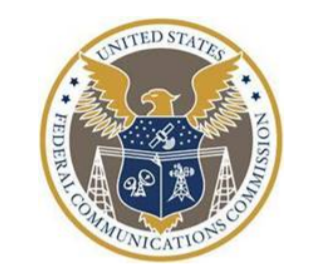In an early holiday present for radio broadcasters, the FCC on Tuesday released a Notice of Proposed Rulemaking that would enable FMs and LPFMs to use computer modeling to verify directional antenna patterns. Proponents say it would save station owners time and money. If passed, the change would apply to applicants filing for new FMs, and to owners applying for facility modifications. The item was originally going to be considered tomorrow at the FCC’s monthly meeting, but was completed earlier.
Antenna manufacturers Dielectric, Jampro, Radio Frequency Systems and Shively Labs teamed up with non-commercial broadcaster Educational Media Foundation to propose the concept to the agency in June. The Commission noted that since similar computer modeling is allowed for AMs and TV/DTV stations, it found cause to waive the public comment period and go directly to an NPRM. It will take public comments on the concept and especially wants input from engineers, broadcasters, and antenna manufacturers.
Since 1963, the FCC has required FMs to physically test antenna performance to show the facility is operating in compliance with its construction permit to be licensed. It’s an expensive and time-consuming endeavor. “We believe that giving license applicants the option of submitting computer models could provide meaningful relief to many FM broadcasters without jeopardizing technical standards or service to the public,” says the Commission in the NPRM.
Directional antennas suppress the radiated field in certain directions and enhance it in others to radiate more RF energy in some directions, in order to prevent interference with other stations or to prevent the signal from radiating outside the station’s authorized service area. “FMs and television broadcasts typically use an integrated antenna system consisting of a single antenna unit that is mounted on a tower or pole. Antenna manufacturers achieve directionality by shaping the reflective surfaces and elements of the antenna,” notes the FCC.
Why Physical Testing is Expensive
To verify performance of a directional FM antenna, manufacturers mount a full-scale model of the antenna or some elements of it on a test range, with pre-positioned testing probes for measuring signal strength in the far field of the antenna pattern. Such a re-creation of the antenna includes replicating the tower or pole on which the antenna is to be mounted, because the structures can affect the antenna’s radiation pattern. Another method is to build a smaller, scale model of the antenna, mounting structure, and nearby structures, and take signal measurements in an indoor anechoic chamber.
The manufacturers and EMF pointed out these methods “greatly increase” expenses and can lead to inaccurate results. Computerized models can reduce or eliminate mechanical errors, according to the antenna makers and EMF. They point out “that measuring the horizontally and vertically polarized components of an antenna’s signal is difficult to perform on a test range, where reflections or imperfections in the test antenna can lead to inaccuracies, whereas a computer model can create an environment in which the theoretical antenna being modeled can be optimized.”
In the NPRM, the FCC acknowledges its current rules are outdated and the restrictions place directional FMs and LPFMs on an unequal footing with AM and DTV. The agency seeks comment on allowing FMs the option of using computer modeling for directional FM antenna pattern verification. It also wants to know if there are concerns about whether computer modeling, without physical confirmation, will provide enough assurance that an applicant’s FM directional antenna will perform in the field as predicted.
Future Needs to be Considered
The FCC says of the over 2,000 full-service licensed FMs, more than 20 percent use directional antennas. Its records also show that 10 LPFMs, or 0.5 percent of the total, use directional antennas. The agency anticipates more directional antennas will be used in the future, given the ongoing demand for FM spectrum and the need for new stations to avoid interference with existing stations.
Comments on the NPRM will be due (to MB Docket 21-422) 30 days after Federal Register publication.
By Leslie Stimson, Inside Towers Washington Bureau Chief





Reader Interactions